Fun Facts About a Critter You Otter Get to Know!
What are some of your favorite outdoor activities? Swimming, fishing or sliding, perhaps? Those are some favorite pastimes for otters, too. Though otters have to spend time looking for food and avoiding predators, they always seem to have lots of time for playing.
PLAYFUL AND OUTGOING
Otters are aquatic or semi-aquatic carnivorous mammals whose closest relatives are weasels and minks. They have long, sleek bodies and long, muscular tails. Their short legs and webbed feet make them powerful, efficient swimmers.
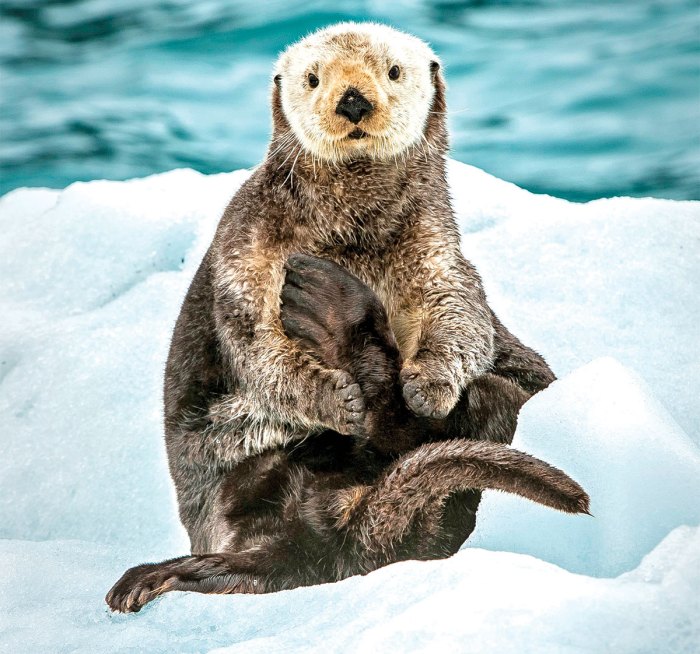
If you could touch an otter, you’d notice the incredibly dense waterproof fur. In fact, it’s the densest fur of any mammal! All those tightly packed hairs trap air, which helps keep the otters warm in chilly waters. They spend a lot of time grooming to keep their fur coats in tip-top shape.
Most otters are sociable creatures that like hanging out, chasing and wrestling with each other. They use high, chirpy notes — along with yelps and other sounds — to communicate among themselves. They are also curious and love to explore. Otters have been known to approach unfamiliar humans just to check us out.
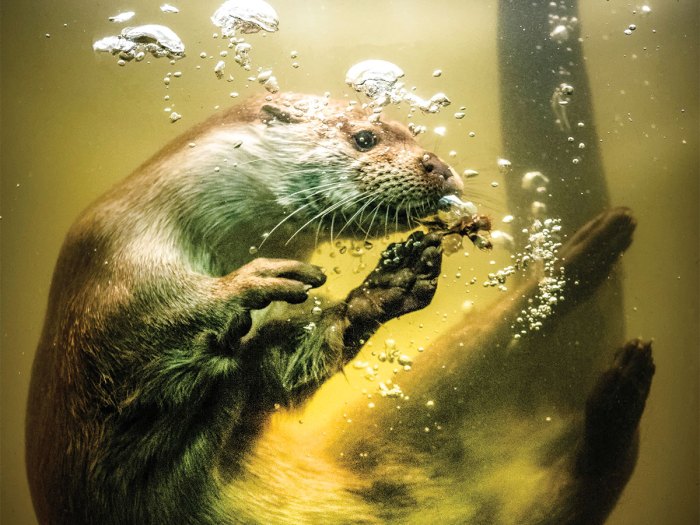
The world’s 13 species of otters are found on all continents except Australia and Antarctica. Most live along freshwater rivers and lakes, with some relying more on land, but some species spend all their lives in the ocean.
The smallest is the Asian small-clawed otter, and the largest is the endangered 6-foot-long giant otter that lives in the Amazon Basin in South America. We have two species in the U.S.: the North American river otter and the sea otter. River otters have a large range and historically were found throughout much of the U.S. and Canada. Sea otters once had a larger range, too, along the entire Pacific Coast, but today they are found in Southern California, parts of Northern California and from Washington to Alaska.
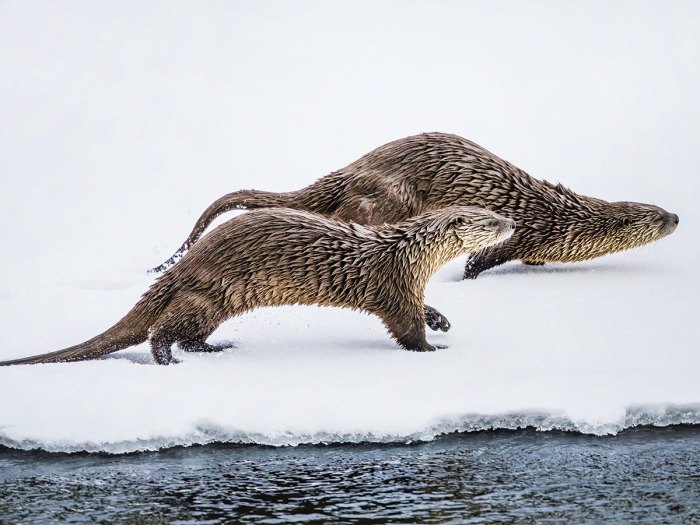
MORE ABOUT RIVER OTTERS
River otters have a tremendously varied diet including fish, crawfish, frogs, reptiles, eggs, birds and turtles. When river otters dive underwater to look for food, they can hold their breath for up to 8 minutes. Their sensitive whiskers help them find food items in murky conditions. River otters raise their pups in dens located along the edges or banks of lakes, ponds, rivers or marshes, and they can access them from underwater, away from prying eyes.
Once, while birding in the Everglades, we happened upon a mother river otter and her baby. They kept calling to one another, and we think the mom was telling her pup that it was OK to come out — that we were not a threat. The pup finally joined her mom in the water, and for about 10 minutes we watched them swimming, playing and grooming.
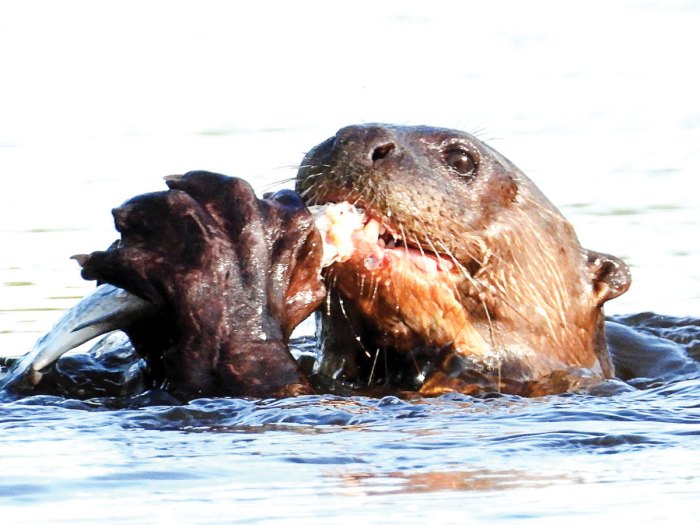
Just like Scout camps have latrine areas to keep things clean and sanitary, river otters have them, too. Latrines also serve as social hubs for male otters — gathering spots to exchange information — maybe about local fishing conditions or to decide with whom to hang out today. Just before using the bathroom, otters do a kind of “poop dance,” complete with raised tails and foot stomping.
Watch this video or visit go.scoutlife.org/otterdance to learn more.
Otter poop is called “spraint.” Some people think it’s extremely stinky, while others think it smells like flowers. We’ll let you decide that one for yourself.
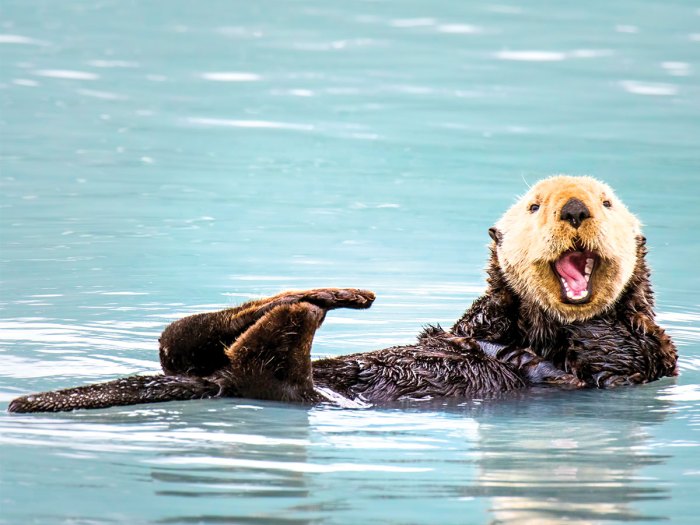
MORE ABOUT SEA OTTERS
Sea otters do things a little differently than their freshwater cousins. They are less social and rarely leave the safety of the water, so when you see them, they are usually eating or resting/napping while floating on their backs.
Watch this video or visit go.scoutlife.org/otternap for info on how best to view sea otters.
They live among the kelp “forests” in the Pacific Ocean, and they wrap strands of seaweed around their bodies to keep from floating away on the tide. This is especially important when moms have a baby to look after (dads don’t help raise the young). Before she dives down to the ocean floor to look for food, she makes sure
the pup is secured in the kelp so she can easily find her baby when she resurfaces.
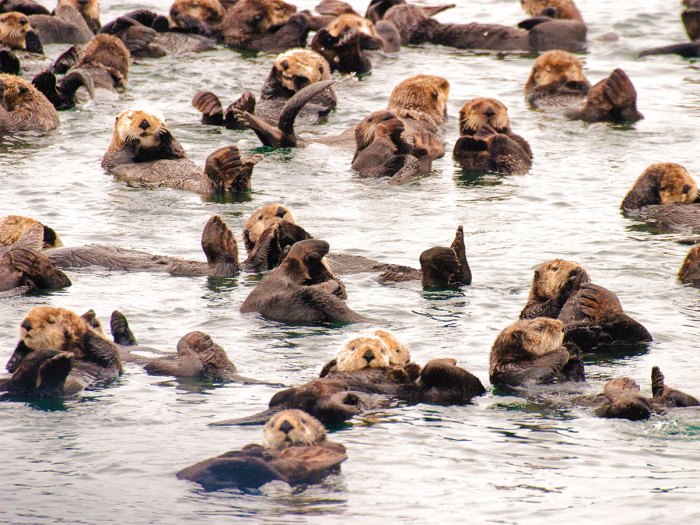
Sea otters eat dozens of types of seafood, from crabs and clams to sea urchins and starfish. They even use tools (typically a mollusk shell or rock) to break open their prey, making them one of the few mammals other than primates to use tools. Sea otters will even carry around a favorite rock in their “pocket” (skin folds under their arm).
We’ve had wonderful experiences watching sea otters in California. Once we saw one eating a starfish while floating on her back, and another time we saw a mom tending to her tiny pup curled up on her chest.
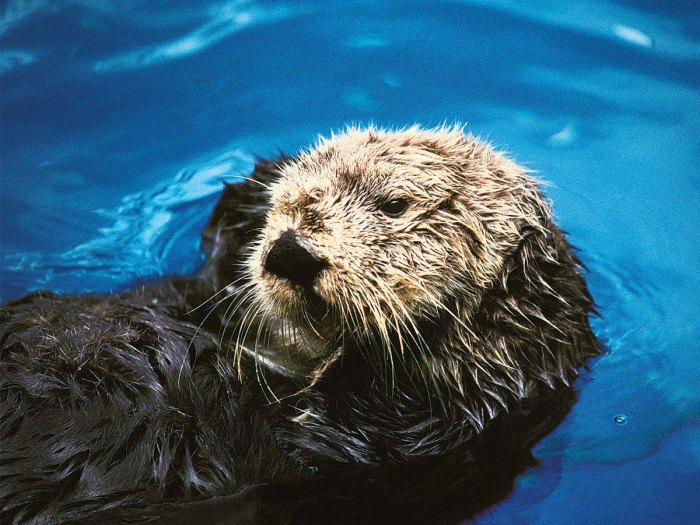
HELP SAVE THE OTTERS
Except for the North American river otter, all otter species in the world are in decline and are either endangered, threatened or at risk. River otters in the U.S. were also once on the verge of becoming endangered. Thanks to hard work by caring conservationists through reintroduction programs, restoring water quality and limiting hunting for fur, this species has made a good comeback. Sea otters, on the other hand, while fully protected in the U.S., are still a threatened species. By the 1800s, they were hunted nearly to extinction for their fur but are making a slow recovery.
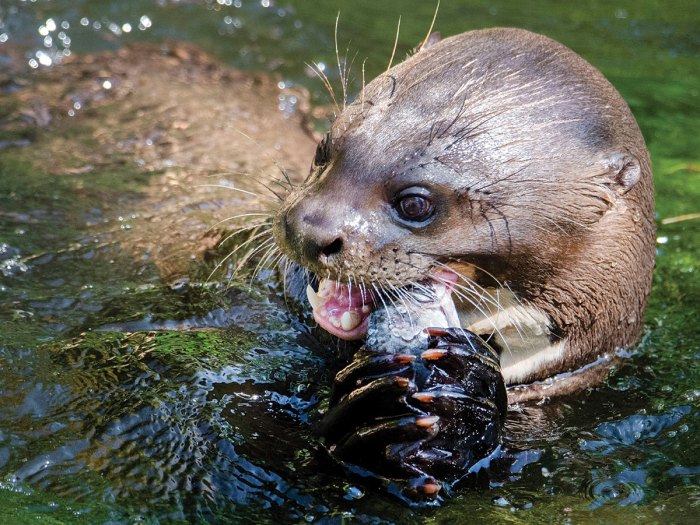
There are still many threats to otters, including water pollution, vehicle collisions and loss of habitats. Some things you can do to help otters are volunteering for beach and river cleanups, keeping toxic chemicals from going down the drain and picking up after your pets. We hope you get a chance to encounter otters in the wild during your outdoor adventures!
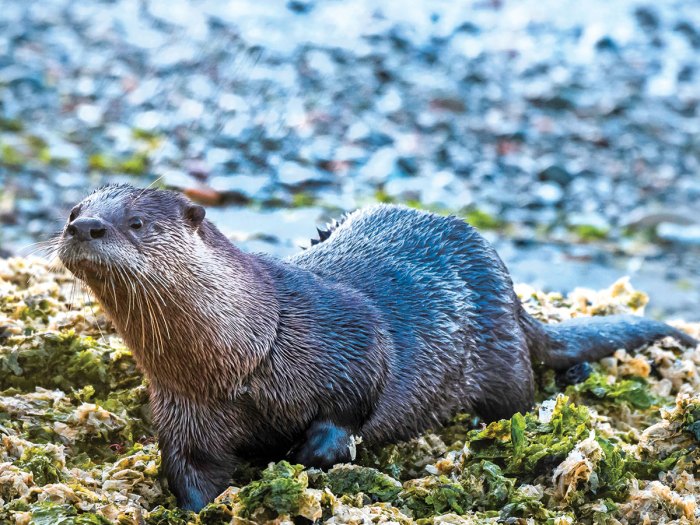
otters are cool!
Really cute animals